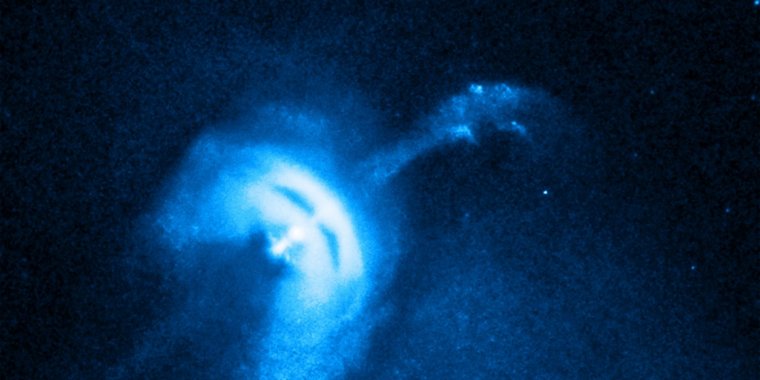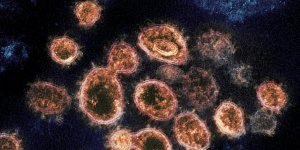| News / Science News |
Neutron Star Measured at 11km Radius
An international research team has obtained new measurements of how big neutron stars are.

Vela pulsar, a neutron star. Photo: NASA/CXC/Univ of Toronto/M.Durant et al; Optical: DSS/Davide De Martin
To do so, they combined a general first-principles description of the unknown behavior of neutron star matter with multi-messenger observations of the binary neutron star merger GW170817.
Their results are more stringent by a factor of two than previous limits and show that a typical neutron star has a radius close to 11 kilometers. They also find that neutron stars merging with black holes are in most cases likely to be swallowed whole, unless the black hole is small and/or rapidly rotating.
This means that while such mergers might be observable as gravitational-wave sources, they would be invisible in the electromagnetic spectrum.
Neutron stars contain the densest matter in the observable universe. In fact, they are so dense and compact, that you can think of the entire star as a single atomic nucleus, scaled up to the size of a city. By measuring these objects' properties, we learn about the fundamental physics that governs matter at the sub-atomic level.
"We find that the typical neutron star, which is about 1.4 times as heavy as our Sun has a radius of about 11 kilometers," says Badri Krishnan, who leads the research team at the AEI Hannover. "Our results limit the radius to likely be somewhere between 10.4 and 11.9 kilometers. This is a factor of two more stringent than previous results."
Neutron stars are compact, extremely dense remnants of supernova explosions. They are about the size of a city with up to twice the mass of our Sun. How the neutron-rich, extremely dense matter behaves is unknown, and it is impossible to create such conditions in any laboratory on Earth.
Physicists have proposed various models (equations of state), but it is unknown which (if any) of these models correctly describe neutron star matter in nature.
Mergers of binary neutron stars—such as GW170817, which was observed in gravitational waves and the entire electromagnetic spectrum in August 2017—are the most exciting astrophysical events when it comes to learning more about matter at extreme conditions and the underlying nuclear physics.
From this, scientists can in turn determine physical properties of neutron stars such as their radius and mass.
GW170817 was caused by the collision of two city-sized objects 120 million years ago, when dinosaurs were walking around here on Earth. This happened in a galaxy a billion trillion kilometers away. (Tasnim News Agency)
YOU MAY ALSO LIKE





